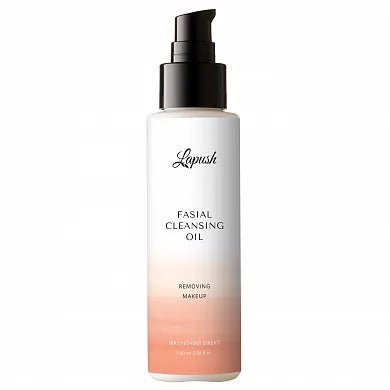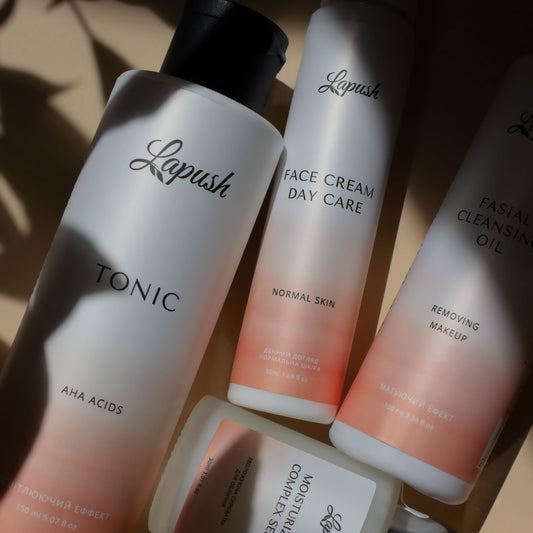
Micellar foam for sensitive skin: gentle cleansing without irritation
Caring for sensitive skin requires special attention to the choice of cleansing products. Micellar foam has become a real discovery for those who suffer from irritation, redness and discomfort after regular washing. This delicate product combines the effectiveness of micellar water with the softness of foam, providing deep cleansing without disrupting the protective barrier of the epidermis. In this article, we will tell you why micellar foam has become a favorite remedy for dermatologists for the care of sensitive skin.
Micellar foam for sensitive skin: what it is and how it works
Micellar Foam for Sensitive Skin is an innovative cleanser based on micellar technology. Micelles are microscopic molecules that act like a magnet for dirt, makeup and excess sebum, without damaging the natural lipid barrier. Unlike aggressive gels and foams with SLS, micellar foam works without creating excessive foam and does not require intensive rinsing.
The main advantage of this product is its dual action. On the one hand, micellar technology provides deep cleansing of pores from dirt and makeup residues. On the other hand, the light foam texture makes the washing process pleasant and comfortable, without causing a feeling of tightness. This is especially important for sensitive skin, because each stage of care should be as gentle and safe as possible.
The formula of modern micellar foams is balanced in such a way as to maintain the optimal pH level of the skin. This is critically important for people with reactive skin that quickly reacts to any disturbances in the acid-base balance. A high-quality micellar foam has a pH of about 5.5, which corresponds to the natural level of healthy skin and prevents irritation.

Why micellar foam is ideal for reactive skin
Sensitive skin requires a special approach, and micellar foam perfectly meets these requirements. The main advantage is the absence of aggressive surfactants (surfactants), which often cause allergic reactions and dryness. Instead, mild cleansing components are used that act delicately but effectively. This allows you to maintain the cleanliness of the skin every day without the risk of damaging its protective layer.
The second important advantage is the ability of micellar foam to strengthen the skin barrier. Many formulas are enriched with ceramides, panthenol and niacinamide - components that restore the lipid layer of the epidermis. When the protective barrier functions properly, the skin becomes less reactive and better resists external stimuli. Regular use of such a product gradually increases the skin's tolerance to various stress factors.
Micellar foam is also great for people who wear contact lenses or are prone to allergic reactions to the eyes. Sensitive skin formulas are ophthalmologically tested and do not cause irritation to mucous membranes. This makes them safe even for removing makeup around the eyes, where the skin is the thinnest and most vulnerable.
Key ingredients in skin cleansers
When choosing a micellar foam for sensitive skin, it is important to pay attention to the composition of the product. The ideal formula contains soothing and moisturizing components that compensate for the possible irritating effect of the cleansing process. Among the most effective ingredients, several categories should be distinguished, each of which performs its own specific function.
Soothing ingredients:
- Allantoin — softens and relieves inflammation, promotes rapid recovery of damaged skin
- Chamomile extract — has anti-inflammatory properties, reduces redness and itching
- Bisabolol is a natural ingredient that soothes reactive skin and increases its protective functions.
- Centella Asiatica — stimulates regeneration, strengthens capillaries and reduces sensitivity
A moisturizing base is also critical for sensitive skin. Hyaluronic acid of different molecular weights provides multi-level hydration - from the surface to the deep layers of the epidermis. Glycerin attracts moisture from the air and retains it in the skin, preventing transepidermal water loss. Betaine, a natural amino acid derivative, creates a protective film on the surface that maintains an optimal level of hydration throughout the day.
Prebiotics and probiotics in the micellar foam support a healthy skin microbiome. This is especially important for sensitive skin, which often suffers from an imbalance of beneficial microflora. Inulin, alpha-glucan oligosaccharides and lactobacilli enzymes create a favorable environment for protective bacteria that naturally inhabit our skin. When the microbiome is balanced, the skin becomes less prone to inflammation and irritation.

How to properly use micellar foam for sensitive skin
The effectiveness of any cosmetic product depends not only on its composition, but also on the correct application. Micellar foam for sensitive skin requires adherence to a certain technique that maximizes the benefits of the product. The first step is to make sure your hands are clean, because you will be touching your face. Wet your face with warm (not hot!) water to prepare your skin for cleansing.
Squeeze a small amount of foam into the palm of your hand - usually a walnut-sized amount is enough. Distribute the product between your palms, lightly lathering it, and then apply to your face in gentle circular motions. It is important not to press too hard or stretch the skin - the movements should be gentle and delicate. Pay special attention to the T-zone, where the most dirt and sebum tend to accumulate. Avoid rubbing aggressively, especially around the eyes.
The cleansing process should not take longer than 30-40 seconds. Micellar foam works quickly, so there is no need to massage your face for several minutes. Rinse off the product with plenty of cool or slightly warm water, making sure that no traces of the product remain. Blot (but do not wipe!) your face with a soft towel using light movements. After that, immediately apply a toner and moisturizer while the skin is still slightly damp - this will help to better "seal" the moisture inside.
Differences between micellar foam and other cleansers
There are a large number of facial cleansing products on the market, and many people do not understand the fundamental differences between them. Micellar foam occupies a special place among cleansing products due to its unique characteristics. Unlike classic cleansing gels, which contain sulfates and create a lot of foam, micellar foam acts more gently and does not disrupt the pH balance of the skin.
Compared to micellar water, foam has a creamy texture that is more pleasant to use for those who are used to traditional cleansing. Micellar water is great for a quick, no-rinse cleanse, but many people psychologically need the feeling of a "real" wash with water. Micellar foam satisfies this need while maintaining all the benefits of micellar technology. It effectively removes makeup and SPF that other mild cleansers can leave on the skin.
Hydrophilic oils, which have recently gained popularity, also differ in the principle of action. The oil first dissolves makeup and sebum, and then, upon contact with water, turns into an emulsion. For very sensitive skin, this process may be too intense. Micellar foam works more delicately, without requiring double cleansing. This saves time and reduces mechanical stress on the skin, which is critically important for people with couperose or rosacea.
Tips for choosing a quality micellar foam for sensitive skin
The cosmetics market offers hundreds of micellar foam options, and choosing the right product can be difficult. The first thing to pay attention to is the labeling "for sensitive skin" or "hypoallergenic formula." Such products undergo additional dermatological testing and contain a minimum number of potential allergens. Look for marks about clinical studies and approval by dermatological associations - this indicates a serious approach to safety by the manufacturer.
What to pay attention to when choosing:
- The absence of irritants in the composition - perfumes, alcohol, artificial dyes, essential oils in high concentrations
- The presence of soothing components - panthenol, niacinamide, allantoin, chamomile or calendula extracts
- The optimal pH level is within 4.5-5.5, which corresponds to the natural pH of healthy skin.
- Minimalist composition - the fewer ingredients, the lower the risk of an allergic reaction
- Packaging with a dispenser is convenient and hygienic, protects the product from oxidation and contamination
Pay attention to the consistency and color of the product. A good micellar foam has a creamy, airy texture that is white or clear and doesn’t have a strong odor. If the product has a bright color or strong scent, this may indicate the presence of potential irritants. Also, check the expiration date — products for sensitive skin often have a shorter shelf life due to the lack of harsh preservatives.
Don’t be afraid to ask for samples or look for mini versions of the product before buying a full-size package. Even the best-in-class product may not be right for your skin due to individual characteristics. Test a new micellar foam for a week, carefully observing your skin’s reaction. If after a few days there is no redness, itching or tightness, then this is your perfect option.

Combination with other stages of care
Micellar foam is just the first step in a comprehensive care for sensitive skin, and its effectiveness largely depends on how you build your entire routine. After cleansing with foam, be sure to use an alcohol-free toner that will restore the pH balance and prepare the skin for the next steps. For sensitive skin, toners with thermal water, centella extract, or hyaluronic acid are suitable.
Serum or essence is the next important step that will enhance the effect of cleansing. After using micellar foam, the skin is most receptive to active ingredients, so it is worth applying concentrated products now. For sensitive skin, serums with niacinamide, ceramides or panthenol are recommended - they strengthen the protective barrier and reduce reactivity. Avoid products with a high concentration of acids or retinol if your skin is very sensitive.
The final step is a moisturizing or nourishing cream that will "seal" all previous layers of care. For morning care after micellar foam, be sure to use SPF protection, even if you spend most of the day indoors. Ultraviolet is one of the biggest enemies of sensitive skin, so sun protection should become an integral part of your daily routine. Evening care can include richer textures and restorative components that work during the night.
Common errors when using
Even with a high-quality micellar foam for sensitive skin, you may not get the expected result due to improper use of the product. One of the most common mistakes is using too hot water for washing. High temperature dilates capillaries, increases redness and can provoke the appearance of couperose. The water for washing should be pleasantly warm or even cool - this soothes the skin and helps to narrow pores.
The second critical mistake is over-cleansing your face. Many people with problematic skin believe that the more often you wash your face, the better. In fact, cleansing more than twice a day can disrupt the natural lipid barrier and increase skin sensitivity. Micellar foam is effective even when used once a day, so don't overdo it. If you didn't use makeup in the evening and your skin is not very dirty, you can limit yourself to just micellar water on a cotton pad.
Many people also forget the importance of thoroughly rinsing off cleanser. Even micellar foam for sensitive skin can cause irritation if left on the face. After massaging your face, rinse it at least 10-15 times, taking special care to rinse away product from the hairline and chin area. Residue can clog pores and cause breakouts, even with the mildest cleanser.
Conclusion: micellar foam as the perfect solution
Micellar foam for sensitive skin combines the effectiveness of modern cleansing technologies with the delicacy necessary for reactive epidermis. This product has become a real salvation for those who have been searching for years for the perfect product for daily care. The unique formula based on micelles allows you to deeply cleanse pores without the use of aggressive surfactants that damage the skin's protective barrier. Enriched with soothing and moisturizing ingredients, micellar foam not only removes impurities, but also takes care of the health of the skin after each use.
Choosing a quality micellar foam and using it correctly is the key to healthy and comfortable skin. Pay attention to the composition of the product, avoid potential irritants and do not forget about the correct cleansing technique. Remember that even the best product takes time to show results - give your skin 2-4 weeks to adapt. Combine micellar foam with other products for sensitive skin, build a consistent care routine and be patient. Your skin will definitely thank you with a healthy glow, no irritation and comfort throughout the day.














